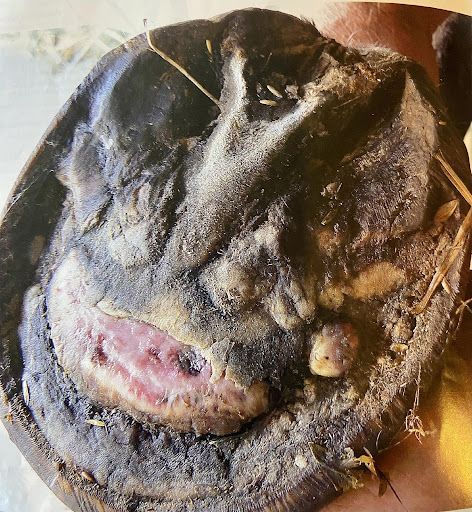THRUSH IN THE FROG – RECOGNIZING & TREATING
Wild About Hooves • 14 June 2016
THRUSH IN THE FROG. If your horse is sensitive in the central sulcus of its frog or you can smell or see a stinking black discharge, it may well have a thrush infection. Thrush has the potential to cause a change in the horses biomechanics. pain from the infection in the back of the hoof causes the horse to land on its toes and if this continues it can have a devastating impact on the navicular region within the hoof capsule.
Learning to recognise and treat common hoof pathologies is taught at our workshops check our education & clinic page for a workshop date near you.

Laminitis kills thousands of horses every year, and leaves thousands of others debilitated with lameness. It will and can affect any horse. And for you, the horse owner it can be devastating: you feel guilty and heartbroken at your horses suffering, confused with all the information as it is typically explained by professionals in scientific terms that can be difficult to understand, costly veterinary bills and you have the major task of nursing your horse back to recovery. . Unseasonal weather patterns around Australia with abundant rain and sunshine saw laminitis at a near epidemic last year. The reason being, that the environmental conditions can trigger increases in the sugar, starch and fructan. These collectively known as non-structural carbohydrates can cause laminitis in any horse or pony. Alarm bells ring this spring!! Be warned and be prepared, for prevention is better than cure.

The extraordinary relationship between humans and the horse has been running since before the birth of Christ. Indeed, there is evidence our domestication of horses goes as far back as 3500 BC. And ever since we recognised the utilitarian value of the horse, there has been the horseshoe. The use of horseshoes has become an almost unquestioned tradition. Humans have been nailing shoes onto horses’ hooves for well over a thousand years. Who can remember back to a time otherwise?
